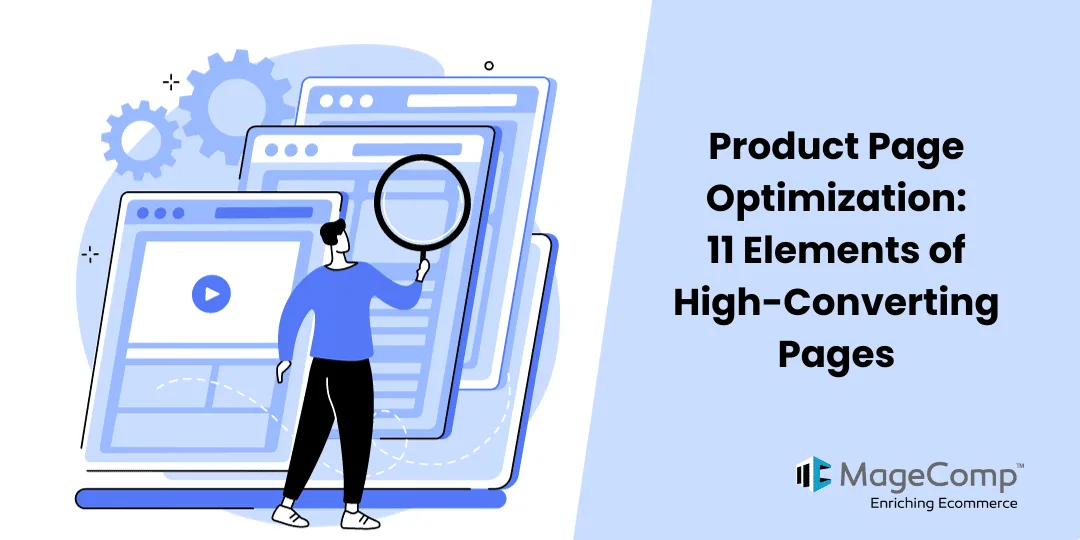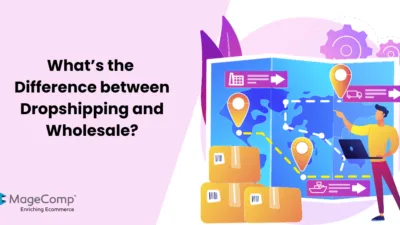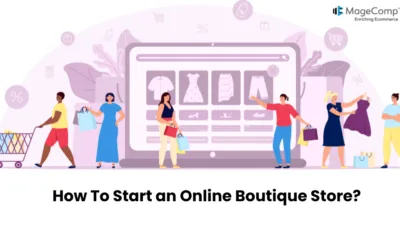Your website analysis shows that potential customers are visiting your website, but your conversion rates are low. This is where you need to find out the actual reason for your low conversion rates. Your product pages can be one of the main reasons for customer drop-offs.
If the customer cannot find what they want on your product pages, they will immediately convert to other websites. Product pages are the money-making pages that must be optimized in order to convert customers.
Let’s find out what exactly are product page optimization and some of the major elements for high-converting product pages to increase conversions and maximize sales.
What is Product Page Optimization?
Product page optimization involves enhancing and fine-tuning product page elements such as product descriptions, images, pricing, and loading speed in order to provide a seamless shopping experience to customers. Optimizing product pages increases the chances of conversions for your eCommerce store. The goal behind product page optimization is to improve user experience and take them to the sales funnel.
Also Read
11 Elements of High-Converting Product Pages
Here are the top 11 elements that must be included in your product pages to optimize them and increase conversions.
1. Compelling Product Descriptions
Product description describes your product and helps customers to understand what products they are ordering. Provide a detailed description of your product, highlighting its benefits and how it solves customer’s pain points. Emphasize what makes your product apart. Doing this will attract potential customers and their purchase decisions.
Your product descriptions must gain the confidence of users by clearly mentioning the required information about your product and helping them to make purchasing decisions. Divide your product content into headings, subheadings, and bullet points to make it more readable and understandable. Moreover, include keywords that help in search engine optimization for your eCommerce business.
2. High-quality Product Images
Product images are very important for eCommerce businesses. As the customer cannot touch or feel the product while shopping online, all they have is product images to make the purchasing decision. Image quality plays a major role in showcasing your products to customers. Add multiple product images in various angles to help customers get a clear view of the product.
Use features like zoom, 3D, and 360-degree view for product images to get a closer and comprehensive for your products. Invest in professional photography for your products, as it gives customers a sense of trust and confidence in your brand.
Recommended Read
Apart from product images, some products are better identified through a video. Add a video of products showing their use to showcase real-life scenarios.
3. Clear and Prominent Call-To-Action (CTA)
The main goal of your product page is to make customers click the Ad to Cart button. CTAs are the prominent component of your product pages. CTA must show up with other content and elements of your product page. Use contrast color for CTA buttons to make them stand out in your product pages. Place the CTA buttons on noticeable places within your product pages.
Your CTAs must be the center of attraction as soon as the customer lands on your product page. Use action-oriented language for CTA buttons that prompt customers to take action and make them easily clickable.
4. Reviews and Testimonials
User-generated content (UGC) like reviews, ratings, testimonials, or feedback plays a significant role in increasing the trust and confidence of customers. Add authentic customer reviews to your product pages. Use review apps to gather feedback from customers. Product reviews help customers to make informed purchasing decisions.
Also, refer to – How to Leverage Social Proof on a Shopify Store?
Encourage customers who purchase from your store to leave a review for your products to increase the trust factor of other customers. You can also include video testimonials of customers and industry experts describing your product, its benefits and usage. Add a star rating system within your website to help customers add ratings for their purchases.
Check out – How to Implement Product Reviews and Ratings in Shopify
5. Page Speed Optimization
Page load speed is crucial to decrease bounce rates and improve SEO performance. Page load speed is one of the ranking factors for search engines. Search engines do not consider slow-loading speed websites for SERPs. Optimize images and videos to improve the loading speed of your website’s product pages. A faster loading speed ensures a smooth and efficient user experience for customers. The recommended page load speed for a website is 2 seconds, but the faster, the better. Every additional second your website takes to load will increase the bounce rate by 0.3%.
Learn More
6. Return and Refund Policy
Transparency is the key element to building long-term relationships with your customers. The customers must be well aware beforehand of any terms of use, return policy, refund policy and any other policies of your product. Your return and refund policy must be clear, transparent, and customer-friendly to build the trust and confidence of customers. Add exchange information and policy about your products to make customers comfortable about your product purchase.
7. Related and Cross-Selling Products
Encourage customers to buy more and showcase related products by implementing strategies of up-selling and cross-selling. Suggest products based on customers’ buying behavior and search history. You can include a related products section at the bottom of the product pages. Offer additional purchases with up-selling and cross-selling, which will ultimately help to increase the average order value of your eCommerce store. Apart from increasing average order value, up-selling, cross-selling, and other product recommendations make customers aware of your other product offerings.
Read More – How to Set Up Cross-Selling and Upselling in Shopify
8. Mobile-Responsive Design
With an increasing use of mobile devices, ensuring responsive design for your product pages is non-negotiable. Make sure to provide a consistent shopping experience to customers across all types of devices. Mobile-responsive design for the product page ensures that customers can easily navigate the page, view product details and seamlessly make a purchase. This will help to gain mobile conversions for your eCommerce website.
9. Pricing and Discounts
Display product prices, discounts or offers clearly on product pages. Eliminate any hidden charges at the time of checkout. This will create a negative impact on customers. The customer must know before about all the charges applied for the product purchase. Limited-time discounts, bundle offers, and transparent pricing contribute to a sense of urgency and entice customers to make a purchase. Your product prices must be a win-win for customers and you both.
Find out – How to Set Product Prices on Shopify
10. User-friendly Navigation
Imagine you land on a website and try finding a product. After some time, you will get frustrated and immediately switch to another website. This is because of the lack of smooth and clear navigation. Make it easy for customers to find what they are looking for. Set clear navigations for products and include a search functionality to make product search quicker. Use breadcrumbs to let customers know where they are on your website. Make it easy and straightforward for customers to check out from the product page. Remove any distractions and focus on guiding customers to their desired path. Simple and easy navigation will lead to a seamless browsing experience.
11. Trust Badges and Certifications
Trust is paramount for online transactions. There are a few ways to increase trust with your product pages. Adding trust badges, secure payment icons, and SSL certificates on product pages assures customers that their transactions and data are safe while purchasing from your eCommerce store. With trust badges, customers instill confidence in your store, and this will take them to the checkout page.
Final Say
By focusing on these 11 elements, you can create product pages that not only attract visitors but also convert them into satisfied customers, driving the success of your online business. Regularly test and optimize these elements to ensure a smooth and seamless shopping experience.
Thank you for reading!!!














